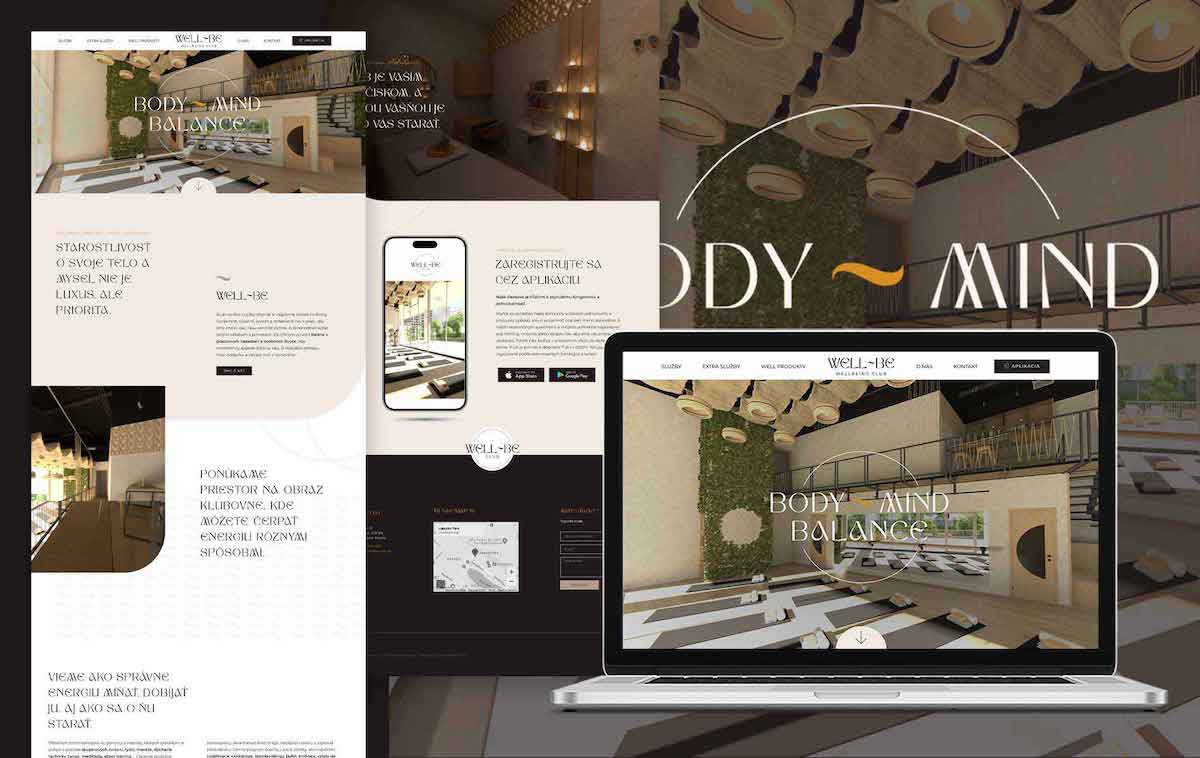Your website is often the first serious interaction someone has with your business. Before they book a call, reply to your proposal, or walk into your office, they scroll through your pages and quietly decide whether they trust you. At some point, every founder and marketing manager asks the same question: when is it time to invest in a website redesign?
The answer is not “every two years” or “whenever you’re bored of the design.” A redesign is a business decision, not a cosmetic one. It takes budget, time, and focus away from other priorities, so you want to be very clear why you are doing it and what you expect it to change.
This article walks through the signs, trade-offs, and hidden costs in a practical way, so you can decide with confidence when is it time to invest in a website redesign for your specific situation, not just because a blog told you to.

Forget the calendar: why timing a redesign by years is misleading
You will often read that you should redesign your site every two to three years. Some studies quote an average website lifespan of around 2 years and 4 months before major updates are needed, with faster-moving industries refreshing even more often.
That number is useful as a rough guideline, but it is not a rule. Some websites continue to perform well for four or five years with only small improvements. Others need to be rethought after twelve months because the business has shifted or the initial strategy was weak.
The real question is not “How old is our website?” but: Is this website still a reliable, profitable asset for the business? Once the honest answer becomes “not really,” you have your first indicator of when is it time to invest in a website redesign.
How long does a website really last?
A website “lasts” as long as it remains:
- Aligned with your current services, pricing, and positioning
- Competitive with what prospects see from others in your space
- Fast, stable, and easy to use on mobile and desktop
- Reasonably easy for your team to update
When any of those four foundations start to crack, the site might still be technically online, but it is no longer doing its job. That is usually the point where business owners start quietly wondering when is it time to invest in a website redesign, even if they cannot yet describe the problem in technical terms.
So instead of watching the calendar, watch what the site is doing for you day-to-day. The clearest signals come from your numbers and your users.
7 signs it’s time to redesign your website
Most businesses do not need a redesign for just one reason. It is usually a combination of issues that slowly adds up until it becomes obvious that the site is holding you back. These are the seven areas we look at when helping clients decide when is it time to invest in a website redesign.
1. The website is no longer supporting your business goals
Start with results. Forget colours and layouts for a moment and look at what matters:
- Are you getting a healthy number of qualified enquiries, demo requests, bookings, or sales from the site?
- Is that number growing, flat, or declining compared to previous years?
- Do key pages (services, pricing, contact) actually lead to action, or do people drop off?
If traffic is stable but conversions are weak, the issue is rarely “we just need more visitors.” It is more often that the structure, messaging, or calls to action are not doing their job. Modern research on conversion optimization is clear: design, copy, and UX are tightly linked to how many visitors take the next step.
When you can see that your website is no longer turning attention into opportunities, that is one of the strongest signs of when is it time to invest in a website redesign. You are not just refreshing the look; you are rebuilding the way the site guides people toward a decision.

2. The design feels dated or off-brand
You do not need a hyper-trendy website, but you do need one that feels current, intentional, and aligned with your brand. Prospects compare you to what they’ve just seen in another tab. If your visual identity looks five years behind, visitors quietly assume your processes, technology, or thinking might be behind as well.
This is not just opinion. According to research from Nielsen Norman Group on first impressions and perceived credibility, people make up their mind about a site extremely quickly, and visual design plays a major role in whether they decide to stay or leave. In other words, your colours, spacing, typography, and imagery are doing a lot of talking before your copy gets a chance.
That impression forms faster than most teams realise. Lindgaard et al.’s study showing users form a visual impression of a website in about 50 milliseconds demonstrates just how little time you have to communicate “professional, modern, trustworthy” instead of “outdated and neglected.” If your hero section still uses old brand colours, low-quality images, or cramped layouts, visitors will feel that disconnect almost instantly.
Practical signs that your design may be hurting you include:
- You feel the need to explain or apologise for the website on sales calls.
- Your brand has evolved, but the site still reflects a past version of the business.
- Competitors’ sites feel cleaner, more confident, and easier to read at a glance.
If any of this sounds familiar, you already have a strong clue about when is it time to invest in a website redesign: when the story your design tells no longer matches the level of work you actually deliver.
3. Users struggle to find what they need
A website can look sharp and still perform poorly if visitors cannot quickly answer three basic questions:
- What do you do?
- Is this relevant to me?
- What do I do next?
When navigation is confusing, content is scattered, or every page layout is different, people lose patience. High bounce rates, short session durations, and messy user paths in tools like Google Analytics or Hotjar are all symptoms of UX and information architecture problems, not just “bad traffic.”
If clients frequently email with basic questions your site should already answer, or new employees admit they cannot find things on the website, you have strong evidence of when is it time to invest in a website redesign focused on structure and user experience, not just visuals.

4. Mobile visitors are getting a worse experience
In many industries, more than half of traffic now comes from mobile devices. Google is also clear: mobile experience is a major ranking factor.
On a practical level, that means your mobile visitors should be able to:
- Read text comfortably without zooming
- Tap buttons and links without mis-clicking
- Complete forms without fighting the layout
- Navigate through key pages using a simple, predictable menu
If mobile visitors bounce at a much higher rate than desktop users, or if your own team avoids using the website on their phones because it is awkward, that is no longer a “nice to fix someday” issue. It is a direct signal of when is it time to invest in a website redesign with a mobile-first approach.
5. The site is slow, fragile, or technically outdated
Speed and stability are no longer purely technical concerns. They are user-experience and SEO issues. Visitors expect pages to load in a couple of seconds; anything slower feels broken. Search engines favour fast, secure, technically sound sites in their rankings.
Typical signs of technical debt include:
- Pages that take a long time to load, especially on mobile or slower connections
- Frequent plugin conflicts or broken layouts after updates
- Security warnings, spam issues, or difficulty keeping software current
- Hosting limitations that make scaling or performance tuning difficult
There is a point where “one more fix” is not cost-effective. If most improvements require workarounds, and your team is nervous every time they click the update button, that is a solid indicator of when is it time to invest in a website redesign on a modern, maintainable foundation.
6. SEO performance has stalled or declined
Search visibility is one of the most common reasons companies revisit their websites. If rankings and organic traffic have been flat or dropping for some time, it is worth asking whether the current structure and content can realistically compete.
Older sites often suffer from:
- Thin or outdated content that does not match current search intent
- Disorganized site architecture, making it hard for search engines to understand your priorities
- Slow performance that hurts Core Web Vitals
- Lack of internal linking between related pages and blog posts
Competitors with cleaner navigation, better content hubs, and more modern technical setups will gradually outrank you, even if your actual services are stronger. A redesign is often the most efficient way to rebuild the structure properly and align it with a long-term SEO strategy, rather than bolting patch after patch onto an old framework.
7. Updating content is painful or risky
Your website should be a tool your team uses regularly, not a fragile system they are afraid to touch. When simple content changes require a developer, or the CMS feels clunky and unpredictable, important updates get postponed. Over time, that is how a site quietly drifts out of date.
Modern builds on platforms like WordPress, combined with a thoughtful page structure, can make it straightforward for non-technical staff to add case studies, publish blog posts, or tweak copy without breaking layouts. If you find yourself thinking “we’d update the site more if it weren’t so much hassle,” that frustration is another sign of when is it time to invest in a website redesign that prioritizes ease of use for your team.

The hidden costs of waiting too long
Most businesses do not lose money because their website is “ugly.” They lose it slowly, through small frictions that add up:
- Prospects who choose a competitor because their site feels clearer and more trustworthy.
- Sales teams who have to over-explain basic information the website should already cover.
- Marketing campaigns that underperform because the landing pages are weak.
- Internal hours wasted wrestling with a CMS instead of focusing on strategy.
None of these issues show up as a single dramatic event. They show up as slightly fewer leads each month, slightly lower close rates, slightly weaker perception in the market. That quiet erosion is often what finally forces the conversation about when is it time to invest in a website redesign.
Redesign vs. refresh: do you really need to start from scratch?
A full redesign is not always necessary. Sometimes a targeted refresh can buy you another year or two:
- Rewriting key pages to clarify services and strengthen calls to action
- Improving load times with better hosting and image optimization
- Cleaning up navigation and adding clearer pathways to enquiry or purchase
- Updating visuals to reflect your current brand without changing the entire structure
However, when weak results, outdated design, poor mobile performance, and technical issues all overlap, a refresh becomes a band-aid. At that stage, the more honest question is not whether you should change something, but when is it time to invest in a website redesign that addresses all of those problems at once, instead of endlessly patching symptoms.
How to prepare before you invest in a redesign
Once you have decided that it is indeed time, the way you prepare will determine how successful the project is. Before talking to agencies or freelancers, work through a few internal steps.
Clarify your goals and non-negotiables
Be specific. “We want a better website” is too vague. Instead, define targets such as:
- Increase qualified enquiries by a certain percentage
- Make it easier for prospects to compare your core services
- Improve mobile usability scores and site speed metrics
- Give your team the ability to edit key content without code
Audit your current content and analytics
Review which pages actually attract traffic and convert. There is no point rebuilding a page that nobody visits, or removing a quiet performer that brings in leads. Tools like Google Analytics, Search Console, and heatmaps give you a factual baseline for what is working and what is not.
Map your future structure
Before any pixels are pushed, sketch a simple sitemap that reflects your business today, not when the site was first built. Group services logically, plan for future content like blogs or resources, and think about how returning visitors will move through the site.
Choose the right partner and platform
The best redesigns are collaborations. Look for a partner who asks about your business model, not just your favourite colours. For many small to mid-sized companies, a custom site on WordPress with a thoughtful design system provides the right balance of flexibility, performance, and longevity. You can read more about this approach in our website design services overview.
What we see in real projects
From our side of the table, the pattern is often the same. A business comes in with a site that is four or five years old. The homepage still talks about services they no longer offer. Case studies are outdated. The team avoids publishing new content because it requires wrestling with an old theme. Everyone already knows, quietly, that the website is not helping.
After a strategic redesign – clearer messaging, modern UX, mobile-first layouts, faster performance, and a manageable CMS – the business finally feels comfortable sending prospects to their site again. Sales teams link to specific pages during calls. Marketing has a solid base for campaigns instead of building everything from scratch. And over the following months, enquiries start to reflect the clients they actually want to attract.
This is why the question of when is it time to invest in a website redesign is less about design trends and more about alignment. When your website, your brand, and your business model are pulling in the same direction, everything you do online becomes easier.

So, when is it time to invest in a website redesign for your business?
If your website no longer reflects who you are, what you do, and the level of quality you deliver, then you already have your answer. The moment you start to feel that the website is working against you instead of for you – that is when is it time to invest in a website redesign.
A thoughtful redesign can:
- Clarify your message and positioning
- Improve conversions and lead quality
- Strengthen trust and credibility with the right clients
- Make ongoing marketing and content work much easier
If you are weighing your options and want an honest, practical conversation about what a redesign could look like for your business, you can get in touch with us. Together we can review where your site is today, where your business is heading, and decide whether now is truly the right time to invest.
